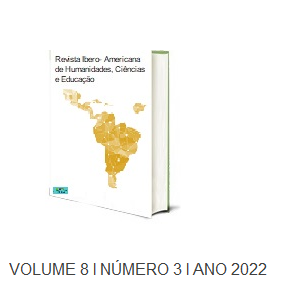THE USE OF TELERADIOGRAPHY AS A METHOD OF ANALYSIS OF BONE MATURATION AND ESTIMATED AGE IN ORTHODONTIC: A NARRATIVE REVIEW
DOI:
https://doi.org/10.51891/rease.v8i3.4674Keywords:
Bone maturation. Orthodontics. Teleradiography.Abstract
Introduction: Growth and skeletal maturation occur during childhood and puberty, where periods of acceleration known as growth spurts are observed. This phenomenon can vary between individuals and between sexes, occurring about two years earlier in females. The main radiographic methods for this analysis are panoramic radiography, which allows evaluating the chronology of dental mineralization, carpal radiography and analysis of the degree of maturation of cervical vertebrae C2 to C4 by lateral teleradiography, allowing to estimate the period of growth in which the patient is. Objective: Therefore, the present work aimed to expose, through a narrative literature review, the method of analysis of age and bone maturation, based on profile teleradiography, emphasizing its importance for orthodontic planning in children and adolescents. Literature review: The assessment of skeletal age by means of teleradiography can be considered a valid and reliable method, presenting the same clinical value as assessment by means of carpal radiography. The method of assessing skeletal maturation by means of lateral teleradiography was initially described by Lamparski in 1972, who examined the growth and maturation of the cervical vertebrae in order to verify whether the alterations found in the vertebrae could be used in the assessment of bone age, instead of carpal radiography. For this, Lamparski established a pattern composed of 6 stages of bone maturation, using the vertebrae C2, C3, C4, C5 and C6, being able to conclude that the maturational changes that occur between the second and sixth cervical vertebra can be used to evaluate the bone age of an individual. Hassel and Farman (1995) modified the method proposed by Lamparski, and analyzed only the second, third and fourth cervical vertebrae, establishing a Cervical Vertebra Maturation Index in six stages (initiation, acceleration, maturation, transition, deceleration and completion). Final considerations: It can be concluded that the bone age assessment method present in teleradiography is reliable and useful to predict the stage of development in which the patient is and the effectiveness of orthodontic treatment depends on this factor, since orthodontic interventions are show more effective when facial structures are most predisposed to respond to their influences.
Downloads
Downloads
Published
How to Cite
Issue
Section
Categories
License
Atribuição CC BY

